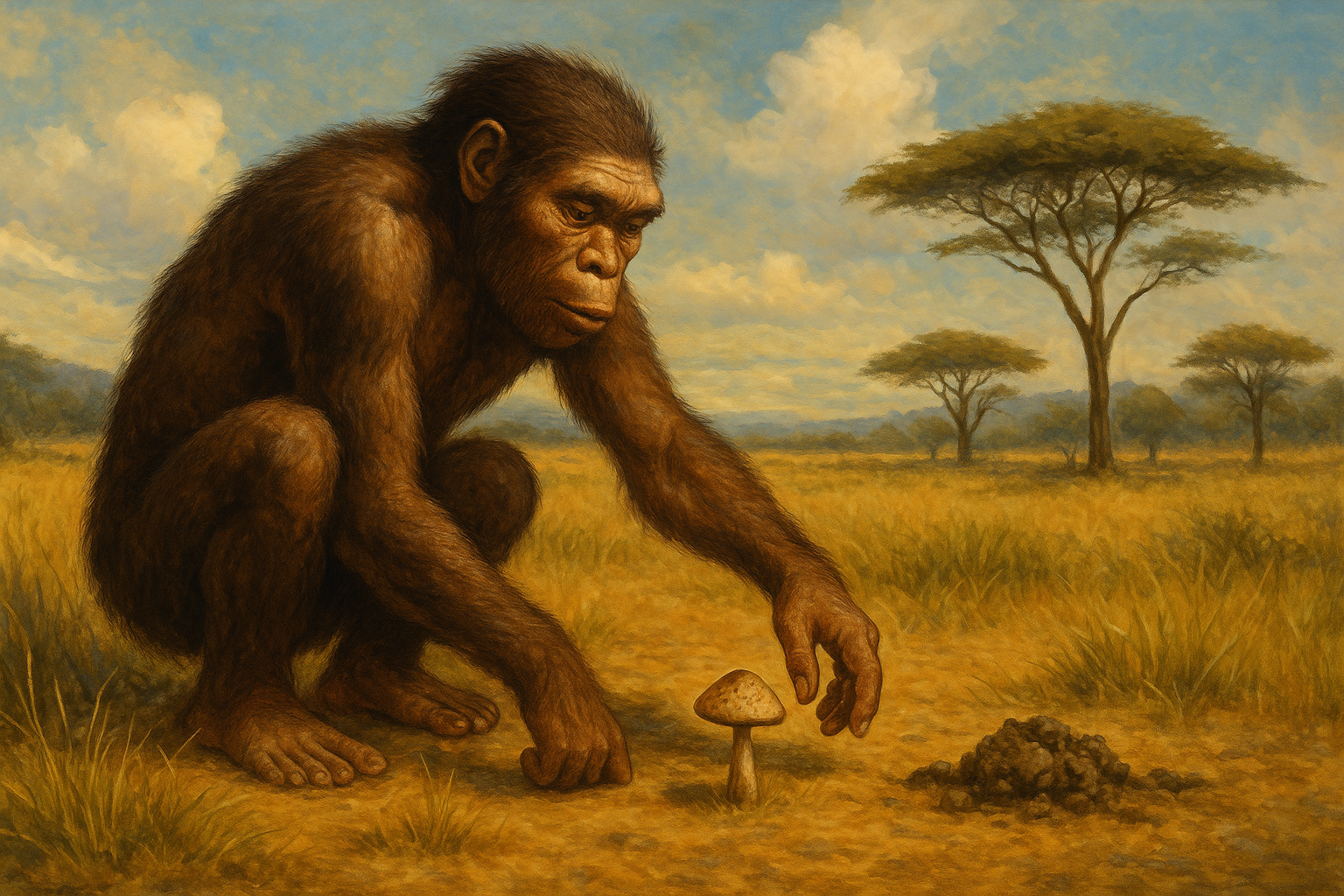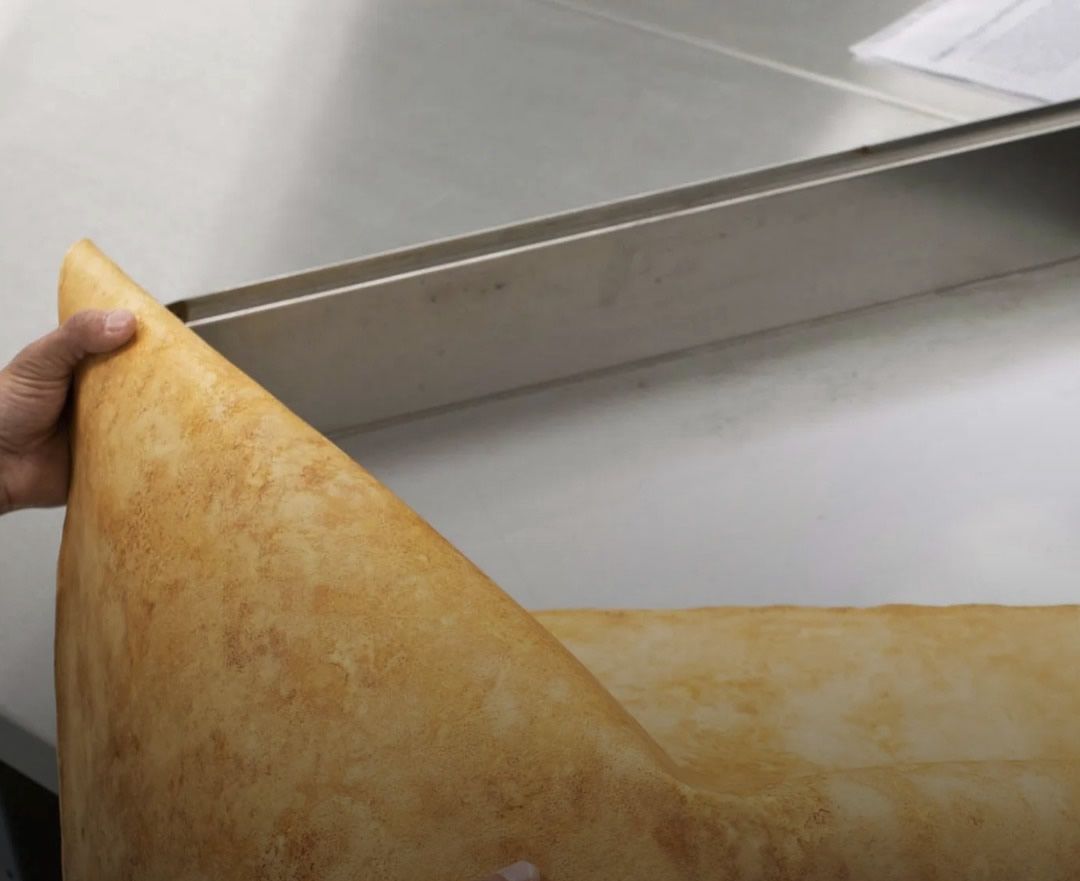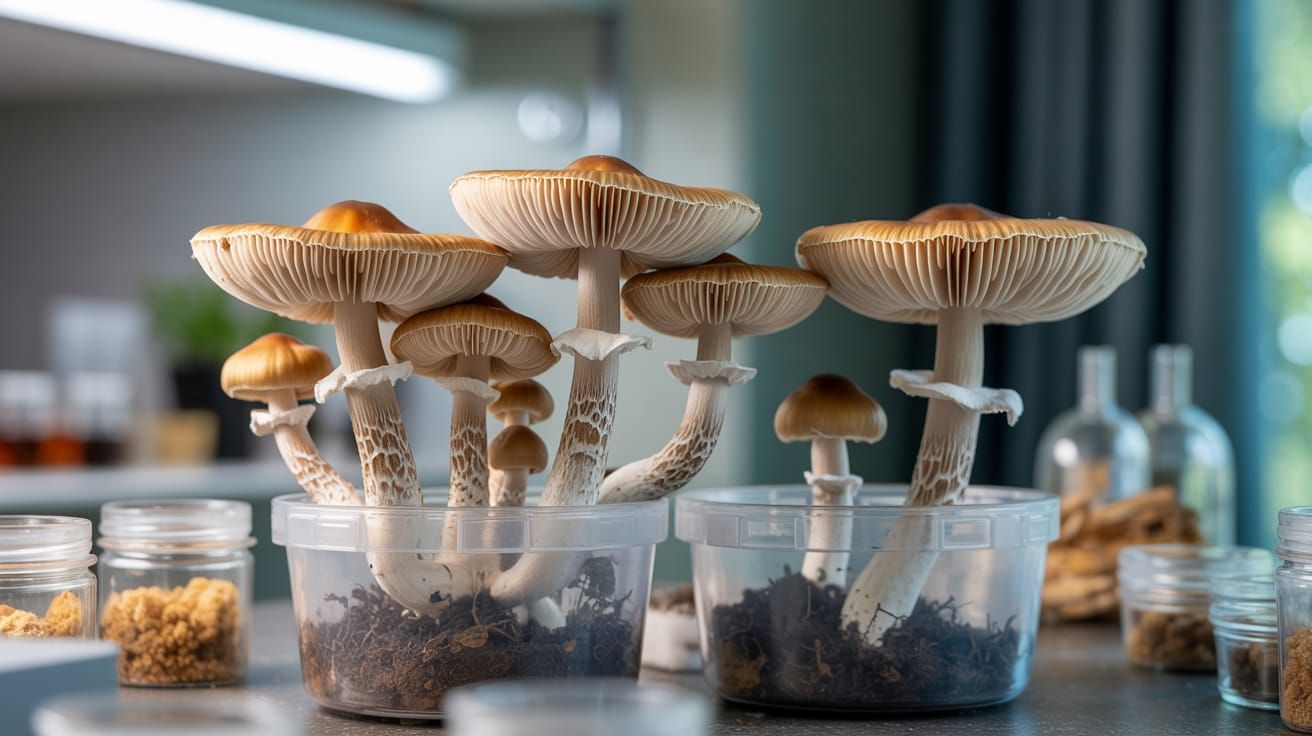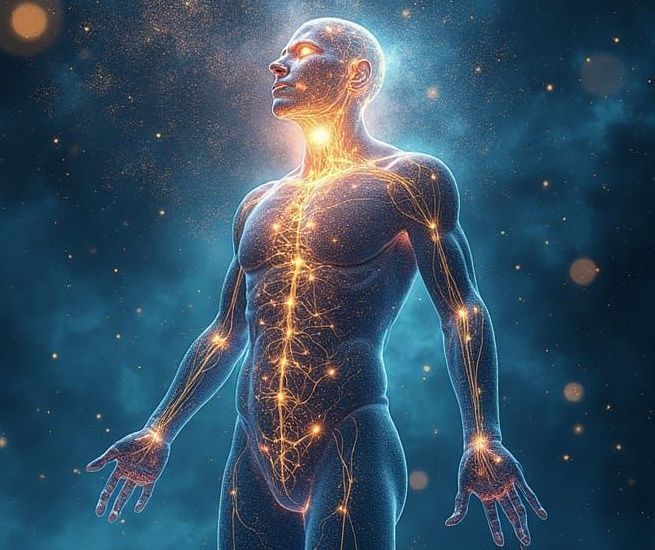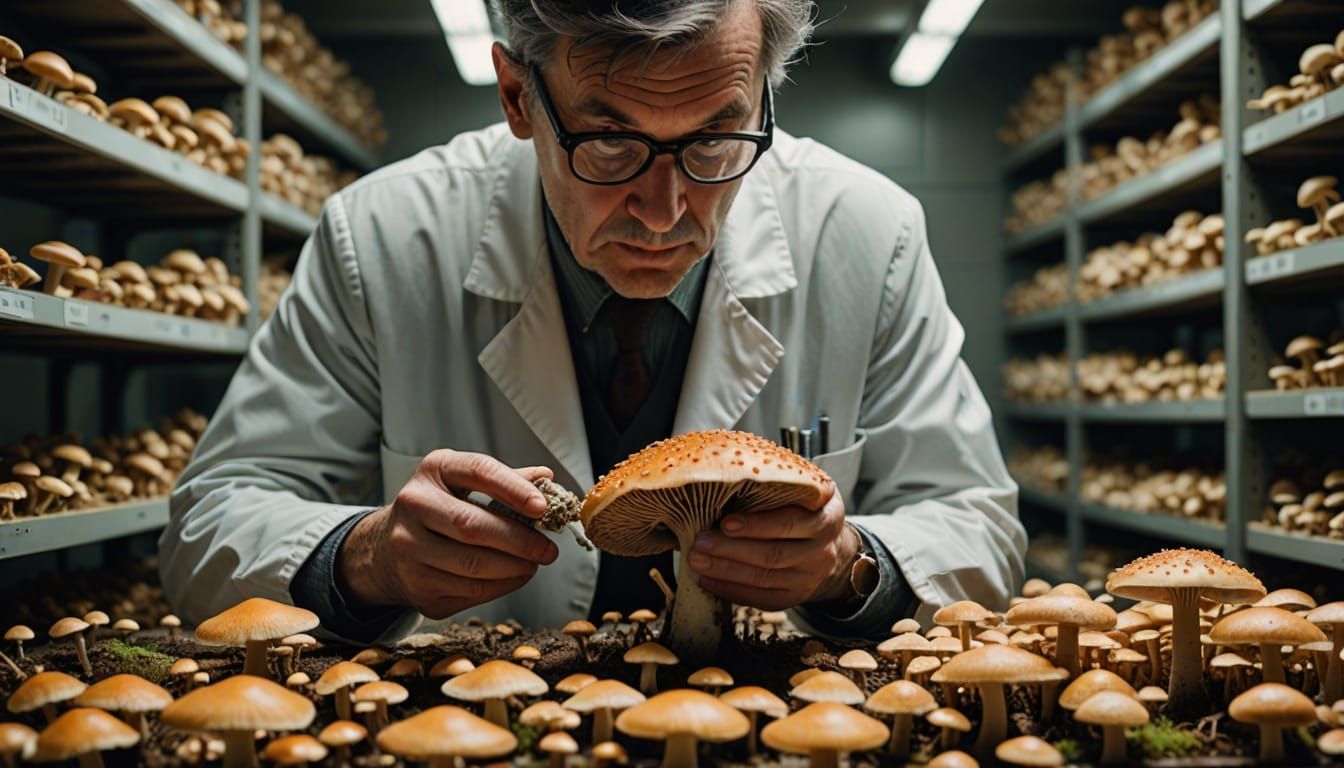The Evolution of Human Consciousness
Psilocybin and the Stoned Apes
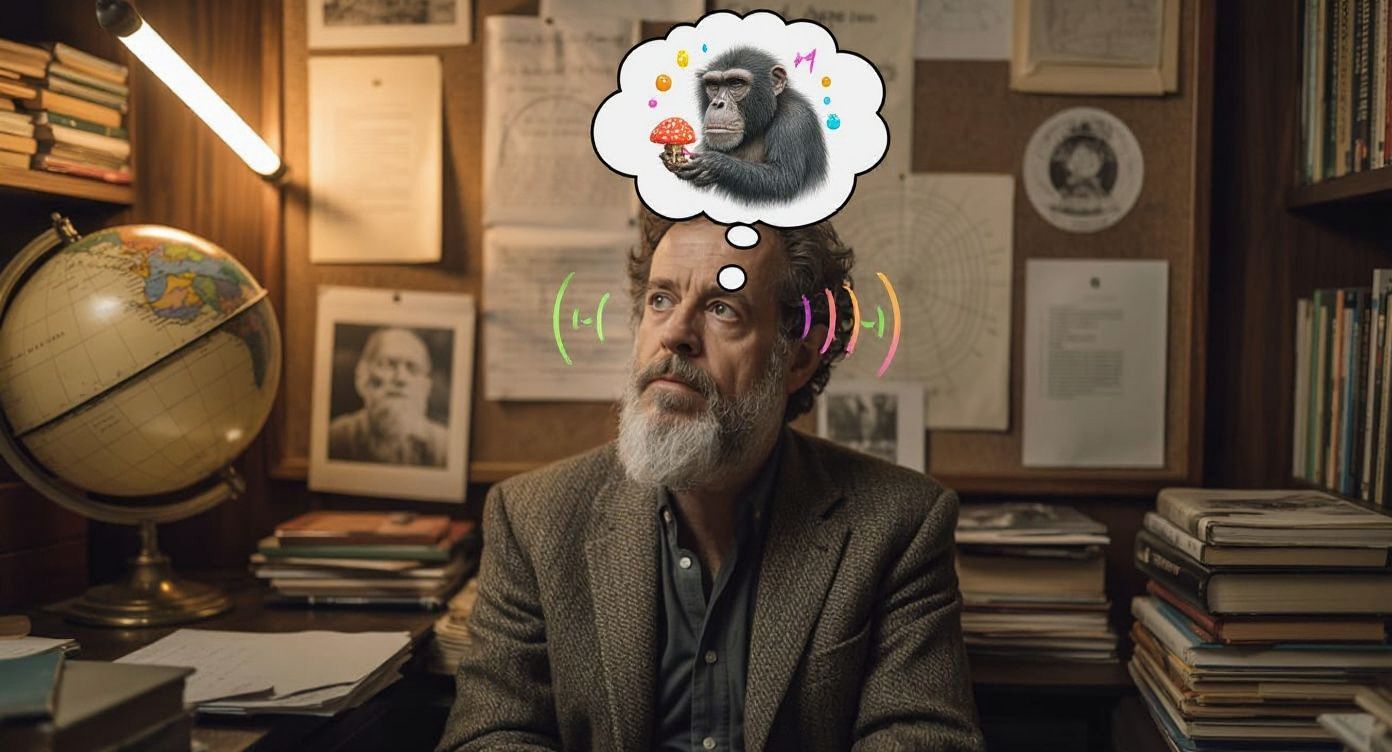
Picture this: the sun bakes down on the African savanna. A young, curious hominin squats near a steaming pile of dung, spots a strange little mushroom poking through, and—without hesitation—eats it. It’s not exactly the romantic birth of human intelligence we imagine. But in one of the most mind-bending theories in evolutionary science, this weird little moment might be the spark that lit the fire of consciousness.
This is the essence of Terence McKenna’s Stoned Ape Theory—a boundary-pushing idea that suggests psychedelic mushrooms weren’t just a side dish for early humans… they were the main course in the evolution of the human mind.
And while mainstream science still raises an eyebrow at McKenna’s claims, a growing body of research into psilocybin is starting to hint that he might’ve been onto something.
A Brain on Fire
Let’s set the stage. Somewhere between 100,000 and 200,000 years ago, something strange happened. Our ancestors’ brains suddenly ballooned in size. That kind of rapid neurological expansion is rare—and difficult to explain with standard evolutionary logic. The usual suspects? Tool use, fire, hunting in groups. All solid theories, sure.
But McKenna offered a wilder idea: what if psilocybin mushrooms—those little brown caps growing from cow dung—were the catalyst? These mushrooms contain psilocybin, a powerful psychedelic compound known to light up the brain like a Christmas tree. It boosts sensory awareness, enhances pattern recognition, and triggers neuroplasticity—the brain’s ability to rewire and adapt.
McKenna didn’t think our ancestors were just getting high for fun. He believed they were bootstrapping consciousness itself. These mushrooms, he claimed, acted like software upgrades for the evolving brain—heightening visual acuity, sharpening social insight, and unlocking entirely new ways of thinking and communicating.
Tripping Toward Civilization
Let’s break it down. You’re an early hominin wandering the plains. You eat a mushroom and suddenly the wind through the grass becomes a whisper. Colors pulse. Sounds shimmer. You begin to see patterns—predators lurking, paths through the brush, rhythms in the stars.
Your brain is alive with connections.
Now imagine you’re not alone. Your whole clan experiences this together. Maybe you huddle around a fire trying to put the visions into words. Maybe you invent the first metaphor. Maybe you reach for meaning. For God. For art.
Language. Myth. Culture. All the things we think of as uniquely human could have bloomed from these deeply altered states. And the evolutionary benefits? Off the charts. Better hunting. Stronger group bonding. Emotional depth. A mystical sense of purpose. These are traits that don’t just make surviving easier—they create thriving.
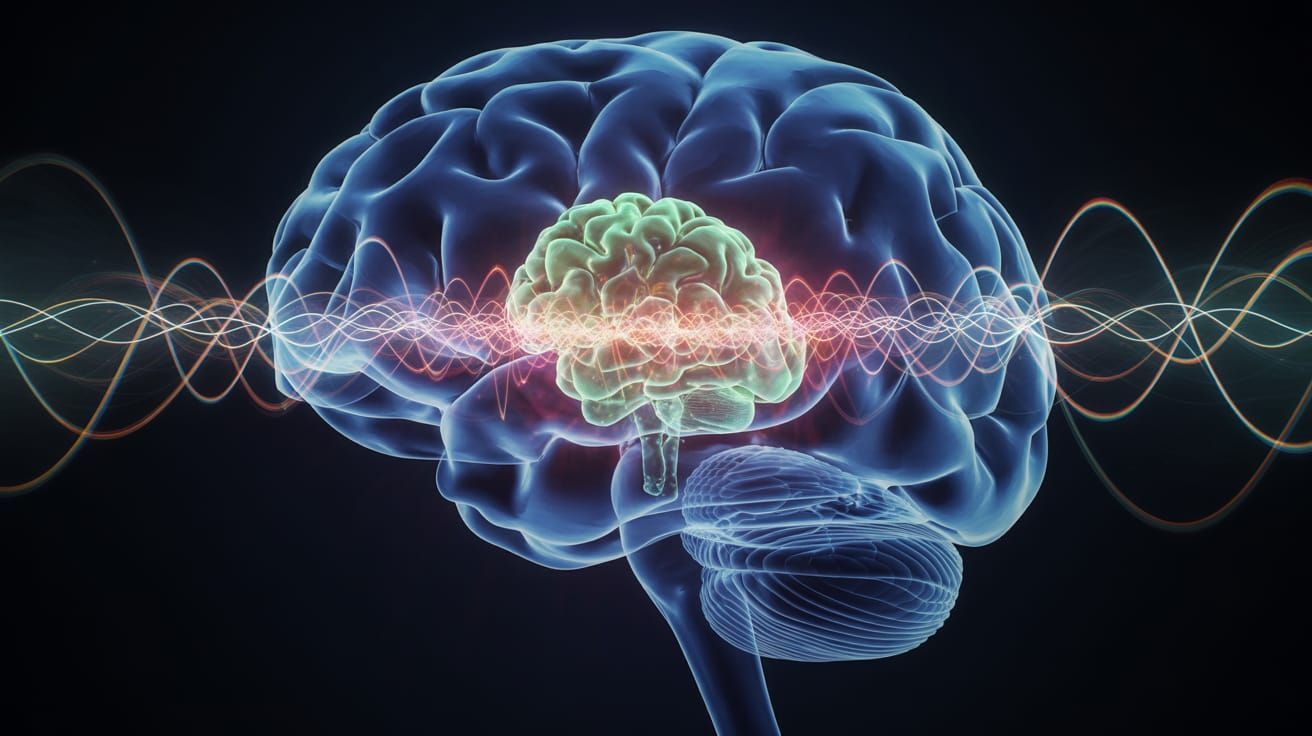
Mushrooms as Teachers
For thousands of years, human beings have revered psychedelic mushrooms as sacred. From spores carried across continents to Mazatec shamans in Oaxaca, to ancient rock art in the Sahara that depicts mushroom-headed beings, the fungal connection to higher awareness is deeply rooted.
But what’s truly wild is how modern science is now circling back to this ancient wisdom.
We now know psilocybin shuts down the default mode network—the brain’s internal narrator, often associated with ego and repetitive thought. In its place, new neural pathways light up, allowing for insights, emotional healing, and a sense of awe and unity.
It’s why researchers are exploring psilocybin as a treatment for depression, PTSD, addiction, and end-of-life anxiety.
So maybe, just maybe, these mushrooms didn’t just help us become human. Maybe they’re trying to help us stay human.
Do Animals Trip Too?
Here’s a fun thought experiment: if psilocybin is so powerful, why aren’t deer writing poetry or jaguars forming religions?
Turns out, animals do indulge in psychedelics. Reindeer famously snack on Amanita muscaria, jaguars chew on ayahuasca vines, and wallabies in Australia have been caught on camera tripping out on poppies.
But the difference is, their brains don’t have the same scaffolding. Psychedelics are amplifiers, not magic keys. They enhance what’s already there.
Early hominins were already cooking with gas—language, social complexity, rudimentary tools. The spores didn’t start the fire… they just added fuel.
Reclaiming the Trip
Today, we live in a world of constant distraction. Blue light. Social feeds. Buzzing notifications. We've built an empire of information, but somewhere along the way, we lost the thread.
We forgot what it means to sit in stillness. To see beyond the veil. To listen—not just to each other, but to the world around us.
Psilocybin is re-entering the conversation—not as a party drug, but as a sacred tool. A mirror. A messenger from our evolutionary past. A reminder that growth doesn’t always mean conquering—sometimes it means surrendering.
Maybe It Was Never About the Dung
In the end, McKenna’s Stoned Ape Theory may never be proven. But its beauty lies not just in its plausibility, but in the story it tells: That evolution is not just blood and teeth and survival.
It’s wonder. Curiosity. Mystery. The ability to look up at the stars and ask, why?
So maybe that ancient ancestor wasn’t just hungry. Maybe they were chosen. Or maybe they simply listened to the whisper in the grass.
And the mushrooms? They’re still here. Quiet. Humble. Waiting for someone else to take the next bite—and the next leap.
Where to Find Premium Spores Today
If you’re looking to dive deeper into the world of spores, there's one name that keeps showing up in the mycology community: Spores101.
From high-quality spore syringes for microscopy to rare and exotic spore prints available globally, Spores101.co is trusted by hobbyists and researchers alike. Their shipping is fast—especially within the USA—and their selection is constantly growing.
Whether you’re collecting, researching, or simply exploring the mystery of mycology, Spores101 is your best "sporece" of truth.
Spread the Spores.



